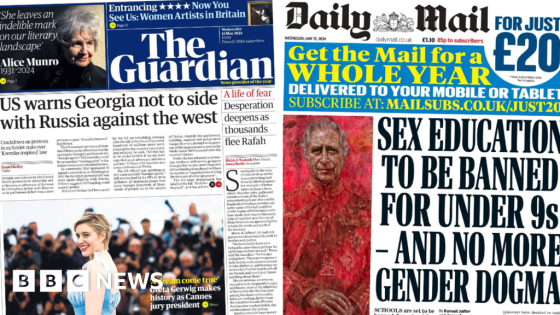After multiple people were injured following a collision between a seaplane and a pleasure boat on Saturday, boaters are sharing tips on how to stay safe on Vancouver’s waters.
Two people were hospitalized after a Harbour Air seaplane taking off from the nearby Harbour Flight Centre hit a boat near Stanley Park on Saturday afternoon.
Canada’s Transportation Safety Board (TSB) is investigating the collision. The plane’s five passengers and pilot were not hurt, but people on the pleasure boat suffered injuries.
The crash has sparked calls for more safety measures in and around Burrard Inlet where the collision occurred, which sees thousands of recreational boaters every summer but also serves as the route for commercial vessels, tugboats and cruise ships.
The Vancouver Fraser Port Authority is responsible for monitoring ship traffic in the inlet. Its harbour master, Sean Baxter, said anyone going out on the water should check the port’s website ahead of time to see what areas they’re allowed to access.

“It’s important that recreational vessels look and watch out for larger vessels, as well as seaplanes,” he said. “These types of port users have limited visibility, so don’t assume that they can see you.
“We encourage everyone to listen, including listening for aircraft … planes landing and taking off need plenty of space.”
Who has the right of way?
While the TSB is investigating the exact cause of Saturday’s crash, it has led to questions over which vessel has the right of way on the water.
Ian Gilson, director of the Canadian Safe Boating Council, says it comes down to which vessel is more maneuverable.
“The vessel that is least maneuverable is the one that has the right of way,” he told Michelle Eliot, host of CBC’s BC Today. “When a floatplane is either landing or taking off, it cannot change its course.
“So any other objects on the water have the responsibility to give way and to stay well clear.”
Ian Gilson, with the Canadian Safe Boating Council, provides BC Today host Michelle Eliot an overview of which traffic has the right of way on the busy waters of Burrard Inlet.
Statistics Canada says almost 6.5 million boating trips were taken between July and September 2021, with Gilson estimating that more than 16 million recreational boating trips are taken each year.
He says that people looking to hit the waters this summer should be mindful of boating safety tips, including wearing a life jacket, as ship traffic increases in and around Vancouver.
Calls for more buoys
Daniel and Candice Hecjman said they had close encounters with two different seaplanes while sailing in Coal Harbour in February 2019.
The couple is calling for more buoys and lights in Burrard Inlet to warn boaters to avoid areas where seaplanes can land.
“If the planes knew exactly where they’re supposed to take off and land, then boaters will never go in that zone,” Daniel said.

In response to a question about adding more buoys, a spokesperson for the port authority said that it regularly publishes procedures in its port information guide to ensure safety on the waterways.
“Since an active investigation of the incident is currently underway by the [TSB], we will await to receive the outcomes of their findings to determine if any of our procedures need to be updated,” the spokesperson wrote.
No licence needed for rentals
Bruce Hayne, the executive director of Boating B.C., says that anyone new to boating should stick to less-populated areas to ensure safety.
“It’s just like when you first get your [driving] licence, you probably don’t want to hop onto the highway and get into heavy traffic,” he said. “You want to start slowly and get comfortable with your vessel.”
Hayne pointed out that in B.C., residents do not require a pleasure craft operator card if they are simply renting a pleasure boat—although he says there are discussions about changing that.
However, he says boat rental companies must provide safety checklists and demonstrations when renting boats, which should help new boaters operate safely.
Source Agencies



